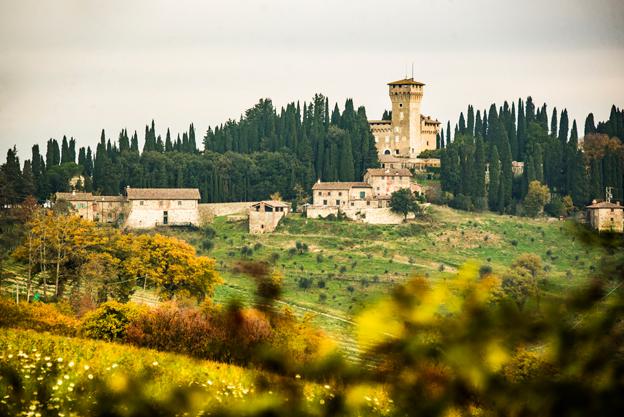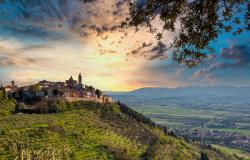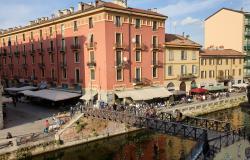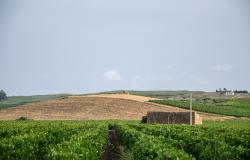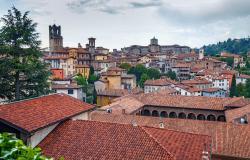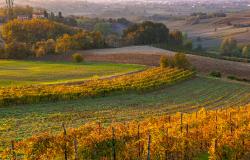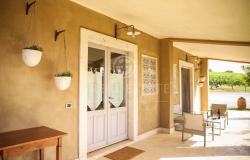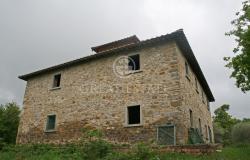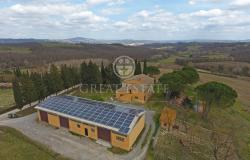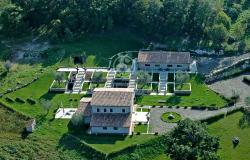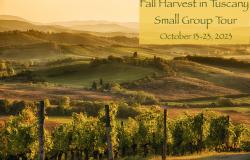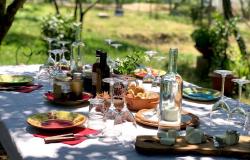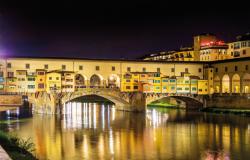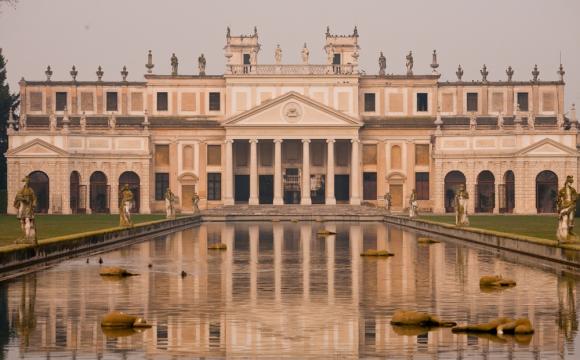The Medici loved to spend their leisure time in the Mugello, a verdant valley surrounded by the Apennine mountains less than an hour north of Florence.
The first members of the legendary family that transformed Florence into the cradle of the Renaissance indeed hailed from the Mugello. When the Medici began rising to power, they decided to extend their control over the territory around Florence; they built castles, fortifications, palaces and convents, which still stand today as remainders of a time, the 14th and 15th centuries, when the Mugello prospered as an important strategic and economic area, and also as a favorite vacation spot for the wealthiest Florentines.

The Medici, in their (now Unesco-inscribed) Villa di Cafaggiolo and Castello del Trebbio, invited artists, writers, philosophers, cardinals and popes, princes and merchants, for cultural gatherings and parties, or went hunting in the dense forests that still cover the Mugello today, a varied landscape halfway between a continental and Mediterranean climate, as evidenced by the presence of olive groves, juniper shrubs and wheat fields as well as chestnut and beech trees.
A 14th-century document mentioned the bounty of food products this land yielded (it still does): meats, cheeses, truffle, olive oil, farro, chestnuts, vegetables, and wine made the Mugello the ‘pantry’ of Florence.
The Mugello is dotted with ancient villages that make for perfect bases to explore the area. Some of them date to the late Middle Ages, when the city of Florence set upon creating the ‘terre nuove’, or ‘new lands’, to expand its control over the region.

Thus, Scarperia was founded in 1306, as a Florentine outpost along the Via Bolognese, the road that leads to Bologna, and as the seat of the ‘Vicario’, a representative for the Florentine Republic, a coveted appointment for the families, including and especially the Medici, who aspired to extend their influence to the territory that surrounded Florence. The 14th century Palazzo dei Vicari houses the ‘Museo dei Ferri Taglienti’, a museum that recounts the history of the village as a major center for the production of knives of all kinds for five centuries.
From Scarperia, visit the Pieve di Sant’Agata, The village grew around the parish church, the most important religious building of the Mugello, erected before the year 1000. This is just one of many parish churches, sanctuaries, and convents scattered through the area, often in panoramic positions, reachable by walking along dirt roads and trails flanked by centuries-old cypresses.

Nearby, San Piero a Sieve’s narrow streets lead to the fortress of San Martino, designed by Florentine architect Bernardo Buontalenti for Cosimo I, another example of the hold the Medici had over the Mugello.
The best way to experience all of this? On foot. Only by the slow pace of walking are you able to observe carefully, immerse yourself in the landscape, and meet the local people.
The Via degli Dei, an increasingly popular trekking route that connects Bologna with Florence, traverses the Mugello for a long stretch. Those who wish to walk its entirety need to plan for five-six days; those who prefer to walk shorter stretches, and perhaps intersperse the walk with stops at local producers to taste their produce, need to go no farther than the Mugello.
Indeed, as you walk along the Tuscan stretch of the Via degli Dei, you may stumble upon an organic cheese farm, such as the one run by a brother and sister team, Soc. Agricola Bacciotti. The ubiquitous cheese in the Mugello is pecorino, produced with whole sheep’s milk, and many small producers here manage the entire production cycle, from the rearing of the animals to the transformation of the milk to the sale of the cheeses at local farmer’s markets. It does not get much more local than this.

You may also come across a winery; wines made in the Mugello were quite prestigious in the Renaissance, but the tradition of winemaking was lost for a long period thereafter. In the past few years, a few winemakers have worked on reviving traditional vine varieties, such as Sangiovese, Malvasia and Trebbiano, and are now producing quality wines that get awards. One such winery is Azienda Agricola Canneto, which has a noteworthy production of Merlot.
The ‘Terre Nuove’ project extended toward the north until the area known as Tuscan Romagna, with the establishment of Firenzuola (‘small Florence’), whose urban layout has remained the same since the mid-14th century. The town has preserved parts of the walls designed by Antonio da Sangallo, the architect who is most famous for designing military fortifications such as the Fortezza da Basso in Florence (it is said that Michelangelo was influenced by his sketches when designing St. Peter’s dome in Rome). Sangallo was born in Firenzuola, which is also the seat of the ‘Museo della Pietra Serena’, a museum dedicated to the ‘pietra serena’, a gray sandstone used extensively in Renaissance Florence in architecture; it is extracted and carved in the area and exported all over the world.

The landscape here gets more mountainous and wild, and there are many opportunities for hiking stretches of the Via degli Dei. This is also where you will be able to see remains of the ‘basolato romano’, paving from the Roman road Flaminia militare, built by the Romans in 187 BC to connect Bononia (Bologna) with Arretium (Arezzo) in Tuscany.
And when you need to rest and some food, stop at a simple ‘osteria’ (try the excellent Antica Osteria di Montecarelli), just like wayfarers of the past did, order the traditional tortelli di patate, filled with potatoes grown in the Mugello, a glass of red, and make a toast to the good life, Mugello-style.
Mugello producers we love:
Il Canneto, https://www.facebook.com/Azienda-Agricola-Canneto-III-1491150847801860/ (wine)
Azienda Agricola Bacciotti, http://pecorinobiologico.it/ (cheese)
Berti, https://www.facebook.com/berti.vendita.diretta.salumi.formaggi/ (cheese and cured meats)
Forno Conti, http://www.fornoconti.com/ (bread and pastries)
L'Aia di Martino, http://www.laiadimartino.it/ (vegetables, cereals, honey, preserves)
Le Pecchie, https://b-m.facebook.com/ilmieledelmugello/ (honey)
Poggio del Farro, http://www.poggiodelfarro.com/en/ (everything farro-based)
Sapori di Casa, https://www.facebook.com/pg/Sapori-di-casa-di-monia-vannini-730254893746616/about/ (home-based bakery)
Panificio Strazza (classic Mugello bread)
Azienda Agricola Elena Galeotti, https://www.facebook.com/AziendaAgricolae.galeotti0/ (meats and cheese)
Azienda Agricola Riccianico, http://www.latteriariccianico.com/ (cheese)
Where to stay:
Hotel Piccola Firenze (Firenzuola), www.hotelpiccolafirenze.it/en (the hosts are delightful!)
B&B Il Nido di Gabbiano (along the Via degli Dei), http://www.ilnidodigabbiano.it/en-gb
B&B Intorno Firenze (San Piero a Sieve), http://www.intornofirenze.com/ (very warm and friendly host)
Hotel Pitti Palace al Ponte Vecchio (Florence), https://www.florencehotelpittipalacealpontevecchio.com/en
Writer Silvia Donati traveled to the Mugello on a press tour organized by Confcommercio Firenze in collaboration with Fondazione Romualdo Del Bianco - Life Beyond Tourism. Photo credits: Life Beyond Tourism / Antonio Viscido 2017.
